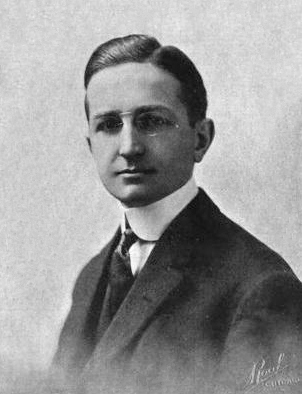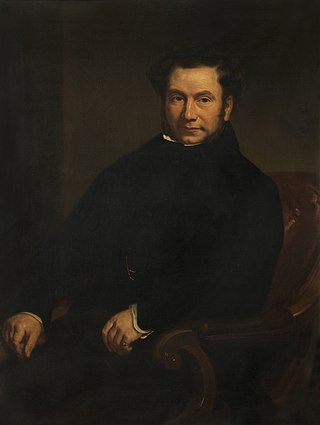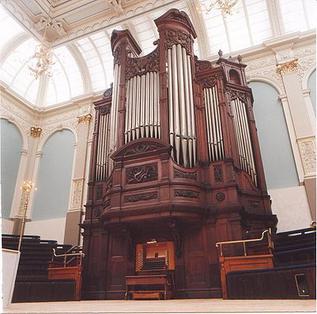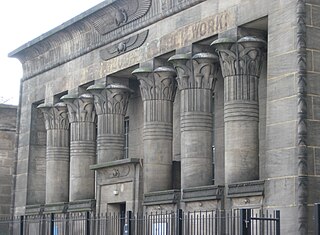
Conacher and Co was a firm of British organ builders based in Huddersfield, West Yorkshire, England. [1]

Conacher and Co was a firm of British organ builders based in Huddersfield, West Yorkshire, England. [1]
The firm originated with Peter Conacher (1823–1894), who was born in Scotland and who studied as an apprentice organ builder in Leipzig, Germany. After returning to England, he worked for Hill & Sons based in Lincolnshire, and then for Walker & Sons in London.
Conacher started his own company in 1854, initially with Richard Brown, then from 1859 with Joseph Hebblethwaite. They built a factory in George Street, Huddersfield. [2] On the death of Hebblethwaite, Peter was joined by his brother James (1820–1886). They built an organ for the Yorkshire Exhibition of 1866; the instrument was awarded a grand medal and was installed in St Peter's Church, Huddersfield. [3]
In 1873 the company moved to the Springwood Organ Works, Water Street, Huddersfield. [4] Peter's son, Joseph Hebblethwaite Conacher (1856–1913), joined the family firm in 1879 and succeeded his father in the business in 1898.
In 1986 the firm was acquired by Henry Willis 4, great-grandson of the notable English organ builder "Father" Henry Willis, who put his son, John Sinclair Willis, in charge of the Conacher Works at Huddersfield.

Ernest Martin Skinner was an American pipe organ builder. His electro-pneumatic switching systems advanced the technology of organ building in the first part of the 20th century.

Benjamin Hick was an English civil and mechanical engineer, art collector and patron whose improvements to the steam engine and invention of scientific tools were held in high esteem by the engineering profession; some of Hick's improvements became public property without claiming the patent rights he was entitled to or without their source being known.

Henry Willis & Sons is a British firm of pipe organ builders founded in 1845. Although most of their installations have been in the UK, examples can be found in other countries.
N.P Mander Limited later Mander Organs Limited was an English pipe organ maker and refurbisher based in London. Although well known for many years in the organ building industry, they achieved wider notability in 2004 with the refurbishment of the Royal Albert Hall's Father Willis Grand Organ. That company filed for insolvency in 2020 with their trading name and intellectual rights being bought out by the Canterbury firm F. H Browne and Sons.

Doncaster Minster, formally the Minster and Parish Church of St George, is the Anglican minster church of Doncaster, South Yorkshire, England. It is a grade I listed building and was designed by architect designer George Gilbert Scott. The church was built in 1854–1858 to replace an earlier building destroyed by fire. It is an active place of worship and has a Schulze organ, a ring of eight bells, and a celebrated clock by Dent. The church is one of two parish churches to have minster status in South Yorkshire. The other is the minster church of Rotherham.

Thrupp & Maberly was a British coachbuilding business based in the West End of London, England. Coach-makers to Queen Victoria they operated for more than two centuries until 1967 when they closed while in the ownership of Rootes Group.

Temple Works is a former flax mill in Holbeck, Leeds, West Yorkshire, England. It was designed by the engineer James Coombe a former pupil of John Rennie; the painter David Roberts; and the architect Joseph Bonomi the Younger. It was built in the Egyptian Revival style for the industrialist John Marshall between 1836 and 1840 to contain a 240 horsepower double-beam engine by Benjamin Hick. Temple Works is the only Grade I listed building in Holbeck.

Henry Willis, also known as "Father" Willis, was an English organ player and builder, who is regarded as the foremost organ builder of the Victorian era. His company Henry Willis & Sons remains in business.

J. W. Walker & Sons Ltd is a British firm of organ builders established in 1828 by Joseph William Walker in London. Walker organs were popular additions to churches during the Gothic Revival era of church building and restoration in Victorian Britain, and instruments built by Walker are found in many churches around the UK and in other countries. The firm continues to build organs today.
Conacher may refer to:

James Jepson Binns was a pipe organ builder based in Leeds, West Yorkshire, England.

Lewis and Company was a firm of organ builders founded by Thomas Christopher Lewis (1833–1915), one of the leading organ builders of late 19th-century Britain.

West Park United Reformed Church is located in the West Park area of Harrogate, England, and is a Grade II listed building. It was designed in Nonconformist Gothic style as West Park Congregational Church by Lockwood & Mawson and completed in 1862 for around £5,000. Along with Belvedere Mansion across the road, it was intended as part of the prestigious entrance to the Victoria Park development. For the Congregationalists it was meant to house an increasing congregation of visitors brought to the spa town by the recently-built railways. It became a United Reformed church in 1972.
Joseph John Scoles (1798–1863) was an English Gothic Revival architect, who designed many Roman Catholic churches.

William Swinden Barber FRIBA, also W. S. Barber or W. Swinden Barber, was an English Gothic Revival and Arts and Crafts architect, specialising in modest but finely furnished Anglican churches, often with crenellated bell-towers. He was based in Brighouse and Halifax in the West Riding of Yorkshire. At least 15 surviving examples of his work are Grade II listed buildings, including his 1875 design for the Victoria Cross at Akroydon, Halifax. An 1864 portrait by David Wilkie Wynfield depicts him in Romantic garb, holding a flower. He served in the Artists Rifles regiment in the 1860s alongside Wynfield and other contemporary artists.

St Peter's Church, also known as Huddersfield Parish Church, is a Church of England parish church in Huddersfield, West Yorkshire, England. There has been a church on the site since the 11th century, but the current building dates from 1836. It is on the Kirkgate near Southgate in the centre of the town and is a Grade II* listed building.

Saltaire United Reformed Church is a church at Saltaire, West Yorkshire, England. Commissioned and paid for by Titus Salt in the mid 19th century, the church is a Grade I listed building and sits within the Saltaire World Heritage Site.
A. Hunter & Son was an English pipe organ maker and refurbisher, established in London in 1856. Hunter was best known for the instruments at St Cuthbert's Philbeach Gardens and St James's, Spanish Place. The firm was acquired by Henry Willis & Sons in 1937.

H. E. and A. Bown was an architectural practice in Harrogate, North Riding of Yorkshire, England, in the 19th and early 20th centuries. Its two partners were Henry Edwin Bown who started the business and died at the age of 36, and his brother Arthur Bown, who carried on the business until he retired in 1911.